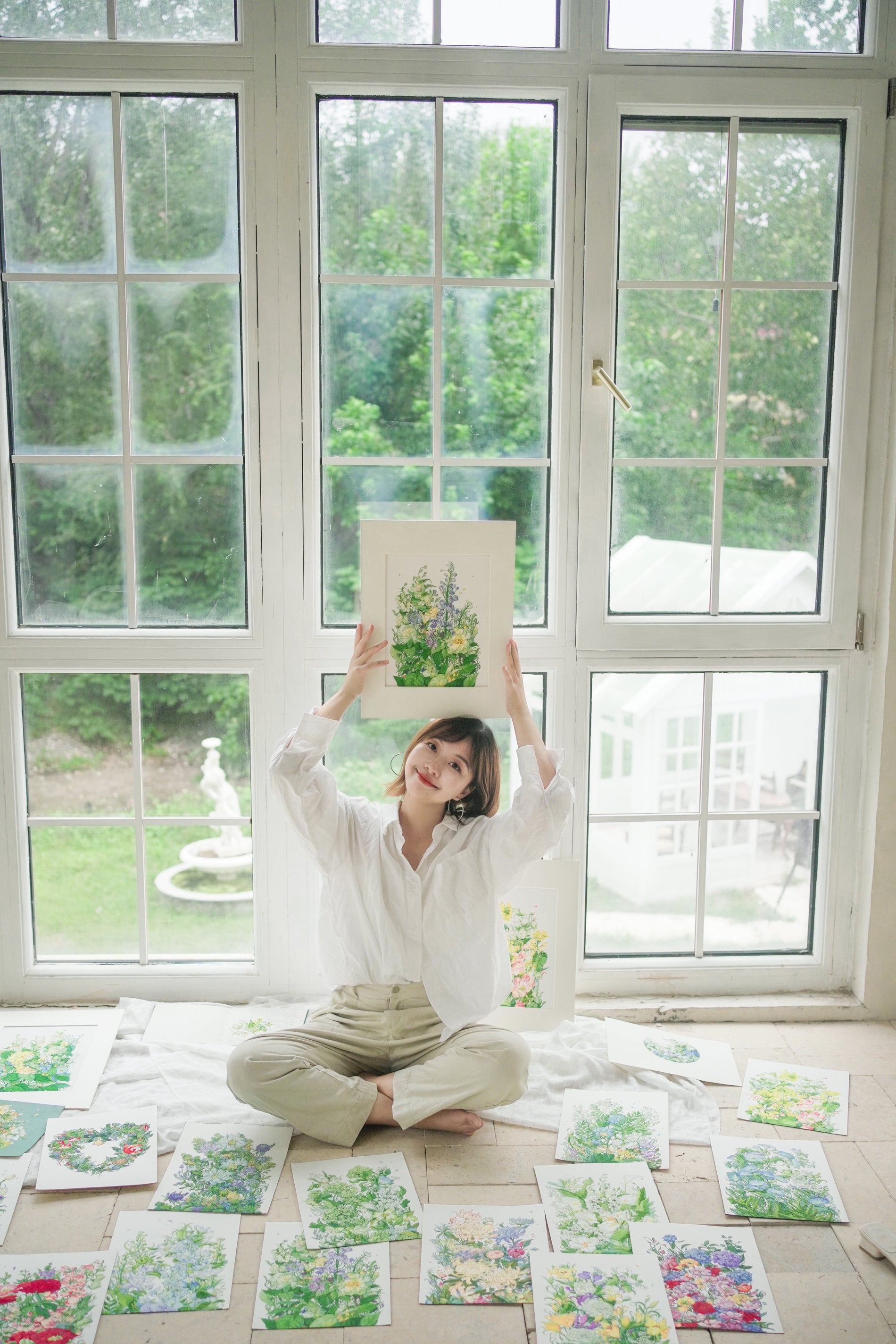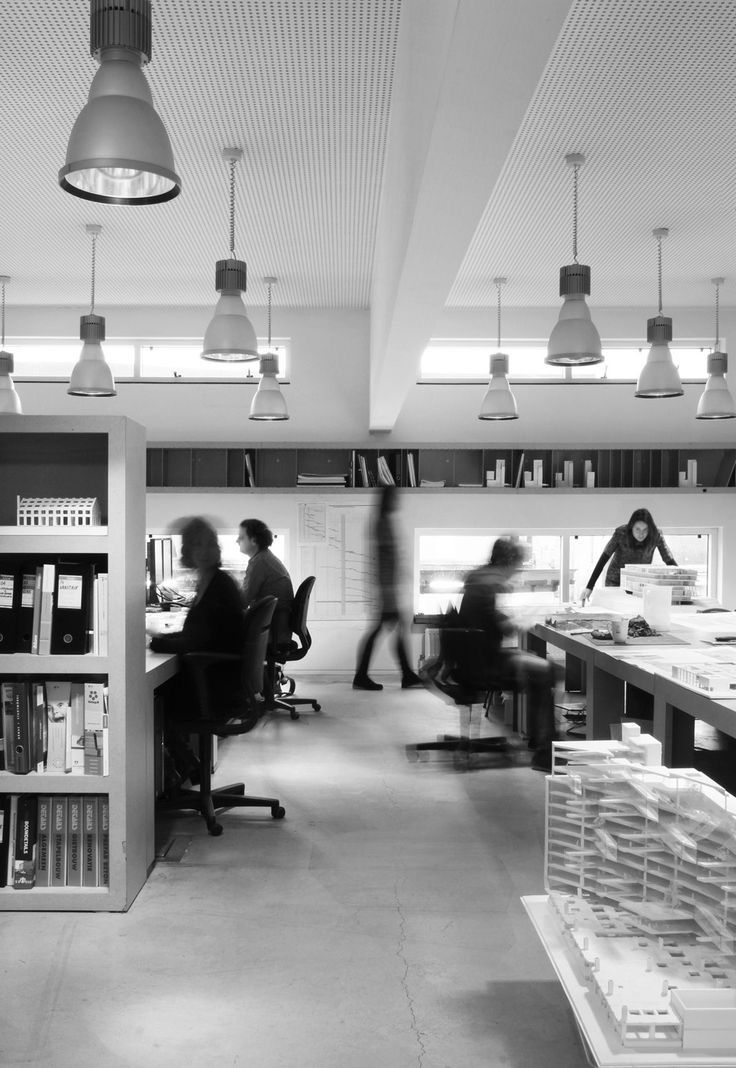Petals, Tides, and Quiet Myth
Dek: Free‑spirited and unmistakably ESFP, SANCHAO paints the kinds of moments you can almost breathe in—delicate watercolor blooms, ethereal figures carrying a traditional hush, underwater worlds where time floats, and paths swept with cherry blossoms. Her practice begins in line, arrives in color, and lingers in feeling.
Prologue — water in two glasses, spring on the table
Morning finds SANCHAO rinsing two glasses of water—one for washing, one for keeping clean—and taping a fresh sheet to the board so the paper keeps its courage. On the table sit a pencil sharpener, a small dish of petals pressed from last spring, and three bowls of paint mixed the day before: a fold of petal‑pink, a quiet seafoam, a blue that waits its turn. She sketches lightly first, mapping the rhythm of stems and sleeves and currents, testing proportions the way a musician tests a key. Only when the line holds does color begin. She lets the first wash travel where it wants, then corrects its course with patience, the way you would guide a child across a stream. Drying takes as long as it takes. In that time she looks out the window, listens to the room, and decides which parts must remain white so the picture can breathe.
The Conversation
Q · Where does a piece truly begin for you?
SANCHAO: With linework—always. I draw until the line feels honest about weight and direction, and until I know where the light will rest. Color comes after, and it comes slowly. Layers need time; judgment needs time too. Watercolor rewards patience and punishes hurry. The process asks a lot from the eye—color sense, taste, and the kind of discipline that lets you stop while the painting is still breathing.
Q · Viewers often say your work feels “delicate but alive.” What creates that movement?
SANCHAO: Water wants to wander, so I let it—just enough. Edges soften, petals blur, water becomes light. The movement lives in those in‑between spaces where two colors meet and decide to be kind to each other. If I lock everything down, it dies. If I surrender too much, it spills. The painting is a conversation about trust.
Q · Your figures hold a quiet, traditional charm. Where does that come from?
SANCHAO: From gestures that don’t raise their voice—how a sleeve carries air, how a silhouette keeps dignity, how a hairpin glints without asking to be seen. I borrow calm from classical motifs, but I try to paint them like a memory rather than a costume. If the figure feels remembered instead of performed, the silence is right.
Q · From garden paths to coral reefs—why blossoms and underwater worlds?
SANCHAO: Blossoms are small celebrations; they ask you to pay attention because they won’t wait. Underwater is the opposite: time stretches. Both remind me to be present—one with urgency, one with mercy. When I paint cherry trees, I think about the air between petals. When I paint coral, I listen for the slow rhythm of a tide you can’t hear but you can feel.
Q · How does your ESFP side show up in the studio?
SANCHAO: Curiosity first, rules later. I test palettes with my hands, not a chart. I’ll try the brave blue even if it scares the pink a little, and then negotiate peace between them. I like the studio to feel like a place where fun is allowed, but meaning has the last word.
Q · How would you describe your color language?
SANCHAO: Soft bases with one clear accent. Petal‑pink resting beside a true blue; seafoam given a thin gold thread. I keep the overall temperature gentle, then let a single color speak clearly enough that the others can relax.
Q · Talk us through your process—not as steps but as a day with a painting.
SANCHAO: I start with thumbnail thoughts, then a clean pencil line to anchor the page. The first wash is light—just enough to tell me the weather of the painting. I let it dry completely; edges settle in that quiet. The next passes are glazes, transparent enough to keep yesterday visible beneath today. I sharpen some edges and let others drift. The most important decision is when to stop. I want the picture to keep its breath when I walk away. Only then do I scan or photograph it, very gently color‑manage for print, and make sure the paper’s grain still speaks.
Q · What do you hope people feel when they live with your work every day?
SANCHAO: Ease, like opening a window. If a phone case or a tote makes your routine one percent kinder, I’m happy. Paintings don’t have to be loud to keep you company.
A day in the painting studio
There is a rhythm the room understands now. Brushes sleep in order, tips resting like small birds. A kettle clicks and fills the two glasses again. SANCHAO tapes the borders not as a fence but as a promise to herself: leave room for light. She sketches the curve of a koi as if it were a sentence she is learning to speak, not a shape she already knows. The first color bows into the paper; the water steers it, not the other way around. She waits. Waiting is part of the work. She makes tea. She touches a dried blossom inside a book and thinks about how color remembers even when petals do not. When the paper is ready, she returns and lets a breath of blue slide under the pink. The tide is inside the page now.

By afternoon the figures arrive—shoulders turned slightly away, fabric lifting where air finds it. She refuses to decorate; she chooses where to be quiet and where to be exact. The room stays warm enough that drying is honest, not forced. She checks the edges with her fingertip, not to correct them but to listen. If the painting wants another hour, it gets one. If it wants nothing more, she stops before the sentence explains itself to death. The scan later is respectful—no polishing the work into something it never meant to be. She would rather carry the grain of paper into a product than sand it away.
Evening brings a small ceremony of arrangement. Today’s piece sits beside yesterday’s, and a few printed swatches join them like patient friends. The studio returns to order. The glasses are rinsed. The tape borders for tomorrow are measured and ready. Somewhere between the petals and the tide, the next painting has already begun.
Editor’s note
SANCHAO’s pieces live easily with linen, pale woods, and rooms that prefer conversation over applause. If you love sets, let the case be the accent that speaks, the tote carry the calm, and the desk mat settle everything between them. Her wall prints land best at eye level with generous breathing space. The point is not to match; it is to listen.
Why we love this creator
She paints sensation—the first breath of spring, a sleeve in motion, the hush under water—and she does it with a structure that never shows off. Line earns the right to be there; color keeps its promise. The result is work that feels carried, not consumed.
Explore more: Shop the collection → /collections/sanchao
Meet the artist: Creator page → /pages/creator/sanchao








